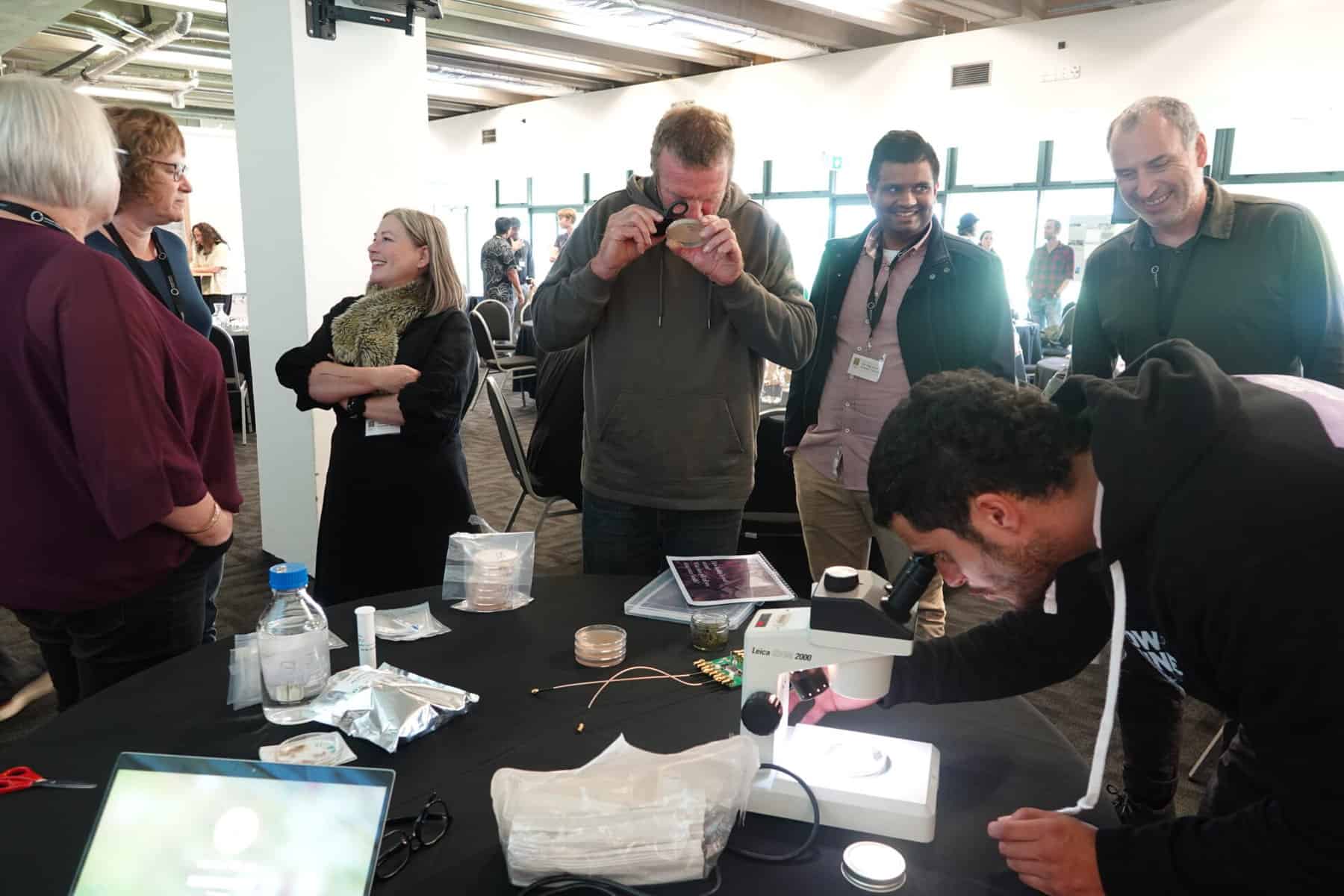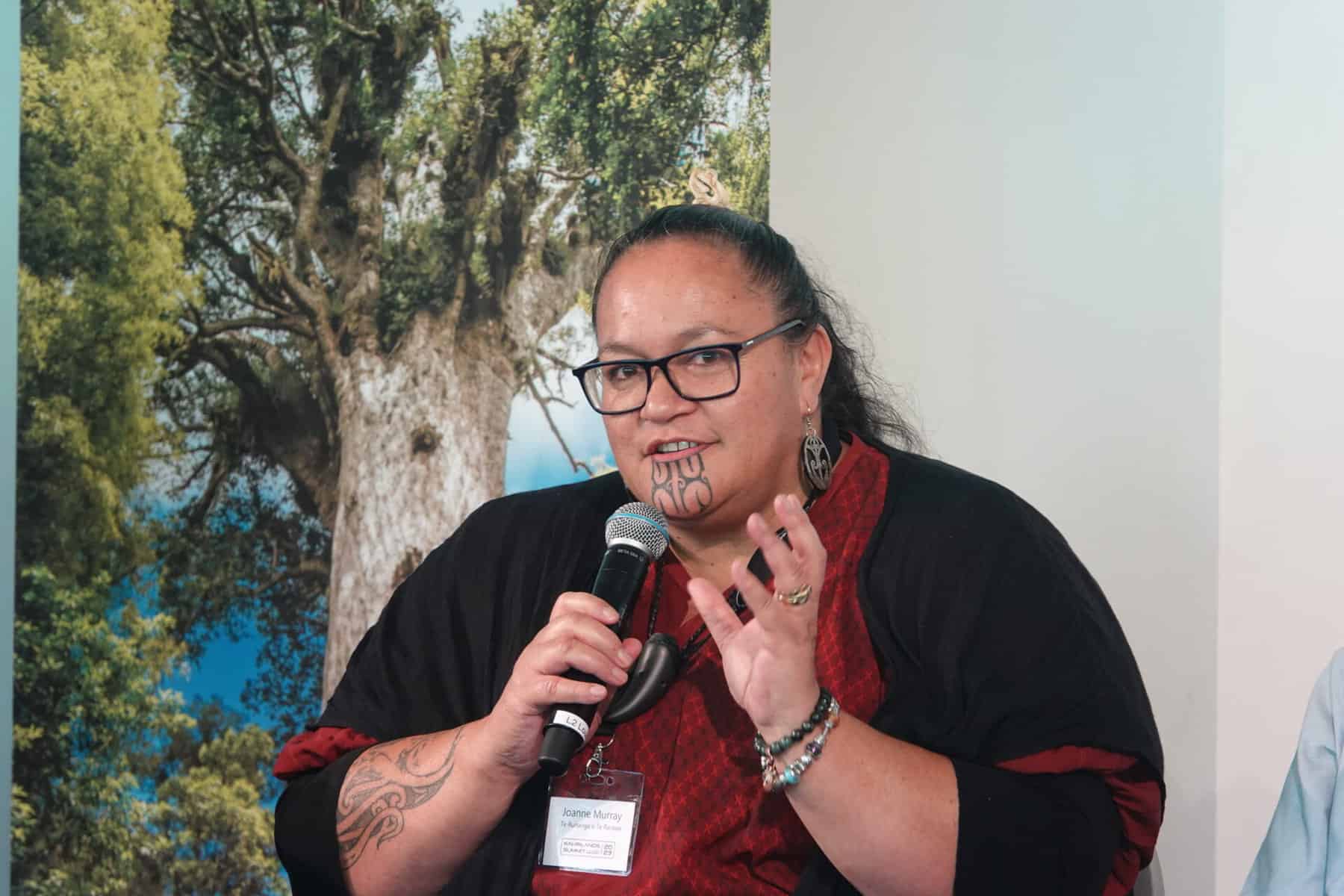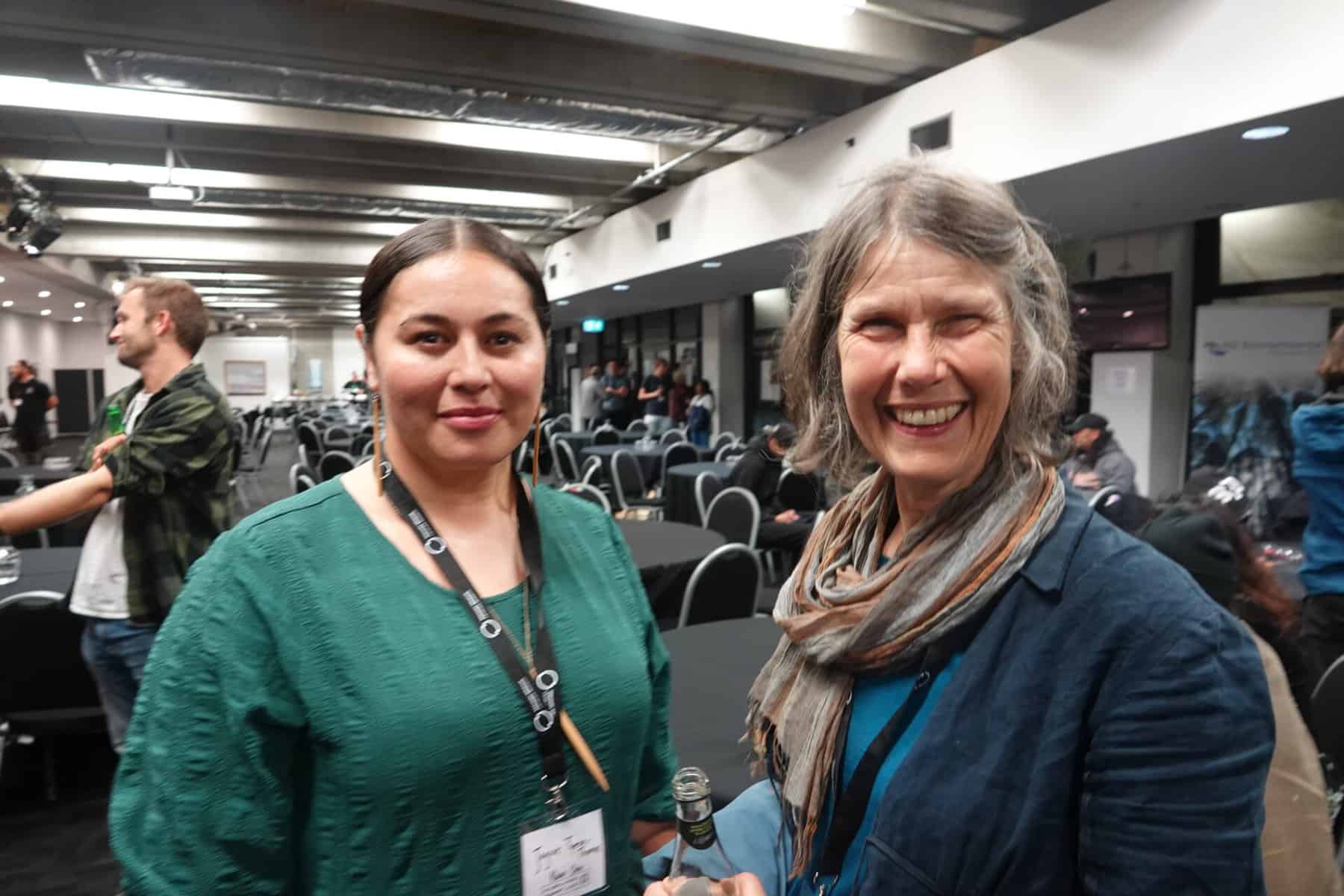

In early May around 170 people gathered in Whangārei for kōrero, presentations, and field trips over four days. We heard from people working in research, operations and outreach, and covered a huge range of topics relevant to kauri ora and myrtle ora.
When NRT was first formed under the Biological Heritage National Science Challenge (BioHeritage) back in 2019, the vision for success was that “the mauri of the kauri and our native myrtle species is safeguarded, sustained and enhanced for our tamariki and mokopuna” (see original scoping report here). To achieve this, we worked to accelerate research into kauri ora and myrtle ora under seven research themes.

“The summit was both a celebration of the research and activities that NRT have accomplished over the last three years, and a forum to share knowledge to further support outcomes,” says BioHeritage Co-Director Daniel Patrick (right, pictured with Co-Director Melanie Mark-Shadbolt).
“It also brought in and connected many others working to protect our ngahere, reiterating that we could not get to where we are now without building on the impressive work and knowledge that came before us. Nor could we have got anywhere without collaborating extensively with those doing the mahi across sectors, including mana whenua and communities on the ground, those in local and central government, and scientists and researchers across organisations and the country.”
A huge thanks to the haukainga, many of the mana whenua of Te Tai Tokerau, for welcoming us at the Hihiaua Cultural Centre on day one and then supporting our kaupapa for the duration of the Summit.
During two days of presentations, topics ranged from genetic variation in myrtle species and kauri phosphite treatments, to kaumātua perspectives of te taiao and empowering ethical Indigenous research.

Ngā Rākau Taketake Science Lead Nick Waipara (Rongawhakaata, Ngāti Ruapani; pictured speaking on the Whakamana panel) says “We were really blessed with the range of presenters. One of the particular things I cherished was the fledglings – Ngā Pī Ka Rere – the early career researchers who also attended and gave some fantastic updates from their research.”
“Ngā mihi to all the practitioners, kaitiaki and others, who gave their whakaaro and updates on their progress with what they’re doing with their mahi on the ground. It was a real blend of operators and researchers, and everything in between.”
Whether the presentations focused on mātauranga Māori, Western knowledge, or a combination of the two, a dominant theme that emerged from the summit was the importance of connection.
Having strong connections among communities and among knowledge systems gives us our best chance at working together to discover and implement solutions for te taiao. Hui, wānanga, conferences are places where those connections can be strengthened, both through the exchange of knowledge and through connections formed between passionate, like-minded people.



In the Summit feedback many attendees asked for more information on certain presentations. In the coming newsletters we will work to compile this information for you in an easy-to-access format.
To read about the field trip hosted by Kelly Kahukiwa click here.
You can find all but two of the presentations from the Kaurilands Summit on our YouTube channel.